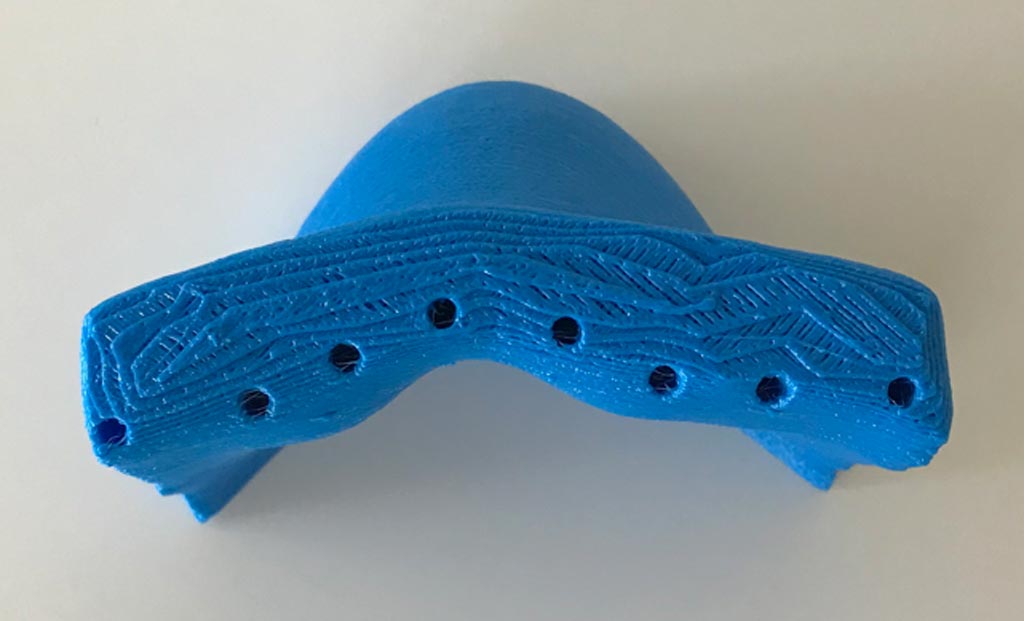Software Prints Individual Boluses from CT Images
By MedImaging International staff writers
Posted on 03 Aug 2018
An advanced software solution enables the creation of customized personal radiation therapy (RT) boluses using three-dimensional (3D) printing, primarily for the treatment of cancer.Posted on 03 Aug 2018
The Adaptiiv Medical Technologies (Adaptiiv; Halifax, Canada) 3D Bolus Software is designed to provide practitioners with a turnkey solution that enables on-site 3D printing of a custom, patient-specific bolus for radiotherapy (RT) with a comfortable and accurate fit. The software converts digital imaging and communications in medicine (DICOM) data taken from each patient’s computerized tomography (CT) scans and turns them into a digital model which can be printed from durable plastic, no matter how large, small, or complex, in just a few hours.

Image: An HDR surface brachytherapy contoured applicator created with Bolus 3D (Photo courtesy of Adaptiiv).
Printable options include a patient-specific uniform thickness bolus that matches every curve and contour, leading to more effective RT; a modulated electron radiation therapy (MERT) bolus, which uses embedded ray-tracing algorithms to evaluate the distance between the planning target volume (PTV) and the prescription isodose line so as to provide optimal dosimetry; a high dose rate (HDR) surface brachytherapy contoured applicator that includes channels for precise and customized RT catheter placement; and other potential ancillary devices. The software fully integrates with existing treatment planning systems and compliments existing RT workflows.
“Boluses have long been a weak link in radiation treatment, and despite the ingenious workarounds created by radiation therapists, dosimetrists, medical physicists and oncologists, standard boluses continue to have air gaps, leading to underdosage for the patient,” said Peter Hickey, CEO of Adaptiiv. “We set out to be the first to develop world-class software that could create patient-specific boluses printed directly from a 3D printer. Our state of the art solution streamlines and integrates directly with a center’s current workflow, giving control back into the hands of health professionals.”
The bolus is a RT device placed directly on the patient’s skin, intended to shape the desired dose to surface anatomy, thus conforming and containing the PTV dose while delivering minimal radiation to adjacent underlying critical structures and normal tissues.
Related Links:
Adaptiiv Medical Technologies














